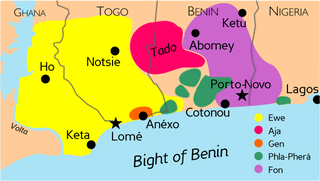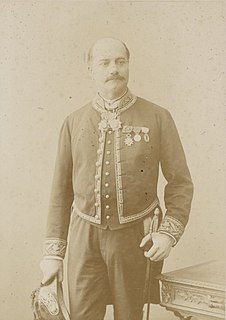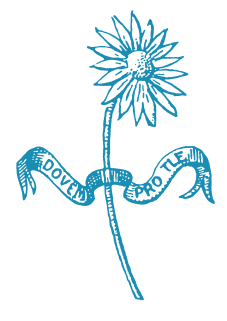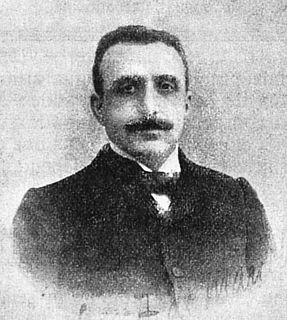
Claude Piron, also known by the pseudonym Johán Valano, was a Swiss psychologist, Esperantist, translator, and writer. He worked as a translator for the United Nations from 1956 to 1961 and then for the World Health Organization.
Volapük is a constructed language created between 1879 and 1880 by Johann Martin Schleyer, a Roman Catholic priest in Baden, Germany, who believed that God had told him in a dream to create an international language. Volapük conventions took place in 1884 (Friedrichshafen), 1887 (Munich) and 1889 (Paris). The first two conventions used German, and the last conference used only Volapük. In 1889, there were an estimated 283 clubs, 25 periodicals in or about Volapük, and 316 textbooks in 25 languages; at that time the language claimed nearly a million adherents. Volapük was largely displaced between late 19th and early 20th century by Esperanto.
An international auxiliary language is a language meant for communication between people from different nations who do not share a common first language. An auxiliary language is primarily a foreign language. It usually takes words from widely spoken languages.

François Just Marie Raynouard was a French dramatist and linguist.

Fon is spoken mainly in Benin by approximately 1.7 million speakers, by the Fon people. Like the other Gbe languages, Fon is an isolating language with an SVO basic word order.

Étienne François Aymonier was a French linguist and explorer. He was the first archaeologist to systematically survey the ruins of the Khmer empire in today's Cambodia, Thailand, Laos and southern Vietnam. His principal work was "Le Cambodge", published in three volumes from 1900 to 1904.

Paul Jules Antoine Meillet was one of the most important French linguists of the early 20th century. He began his studies at the Sorbonne University, where he was influenced by Michel Bréal, Ferdinand de Saussure and the members of the L'Année Sociologique. In 1890, he was part of a research trip to the Caucasus, where he studied the Armenian language. After his return, de Saussure had gone back to Geneva so he continued the series of lectures on comparative linguistics that the Swiss linguist had given.
Niçard, Nissart/Niçart, Niçois, or Nizzardo is the dialect historically spoken in the city of Nice, in France, and in all the area of the historical County of Nice. Niçard is a subdialect of Provençal, itself a dialect of Occitan, but some see it as more closely related to the Genoese dialect from neighboring Italy, mainly for political reasons.

César Chesneau, sieur Dumarsais or Du Marsais was a French philosophe, grammarian and contributor to the Encyclopédie ou Dictionnaire raisonné des sciences, des arts et des métiers.
Antoine Thomas was a French linguist. He is known for his work with Adolphe Hatzfeld and Arsène Darmesteter, on the Dictionnaire général de la langue française du commencement du XVIIe siècle à nos jours, which was issued in parts from 1890 to 1900. He supplied etymological notes.

A constructed language is a language whose phonology, grammar, and vocabulary, instead of having developed naturally, are consciously devised. Constructed languages may also be referred to as artificial languages, planned languages or invented languages and in some cases, fictional languages. Planned languages are languages that have been purposefully designed. They are the result of deliberate controlling intervention, thus of a form of language planning.
Denise Bernot was a French academic who was professor of Burmese at the Institut national des langues et civilisations orientales from 1960 to 1989. She was the widow of Lucien Bernot (1919–1993) who was professor at the Collège de France in the chair 'Sociographie de l'Asie du Sud-Est'. She was an alumna of the École des Chartes.

Bolak is a constructed language that was invented by Léon Bollack. The name of the language means both "blue language" and "ingenious creation" in the language itself.

Léon Bollack was a French trader who invented Bolak, a constructed language that also went by the name "the Blue Language", in 1899.

Claude Hagège is a French linguist.
Zinzolin or gingeolin, is an old or literary color name that once meant a dark red, and today usually means a reddish purple color. It is generally used to describe clothing.
Eugène de Planard was a 19th-century French playwright.
Jean Dubois was a French linguist, grammarian and lexicographer.
Édouard Sommer was a French philologist, novelist, translator, grammarian and lexicographer.
Bernard Jullien was a French teacher, novelist and linguist.











